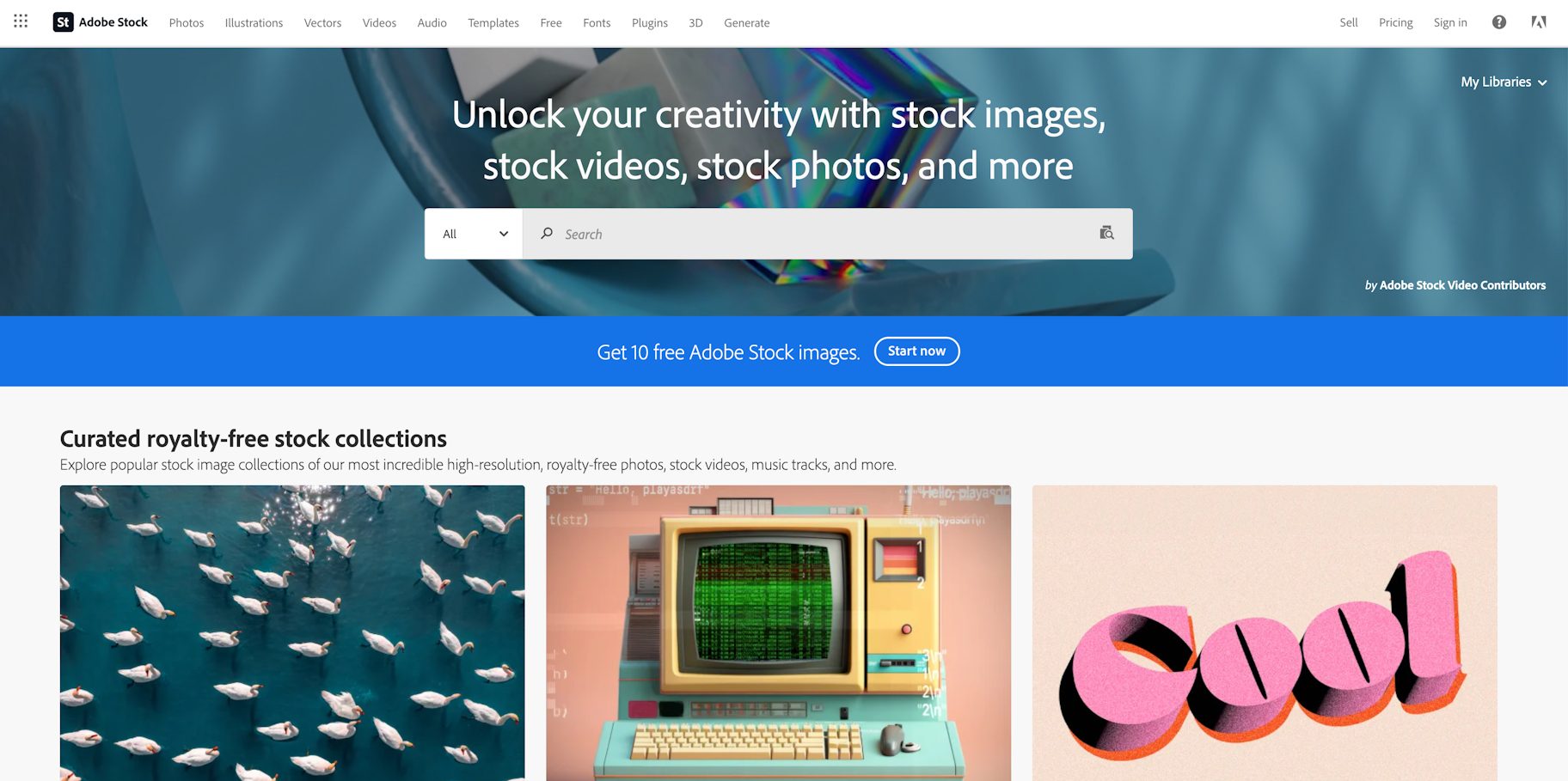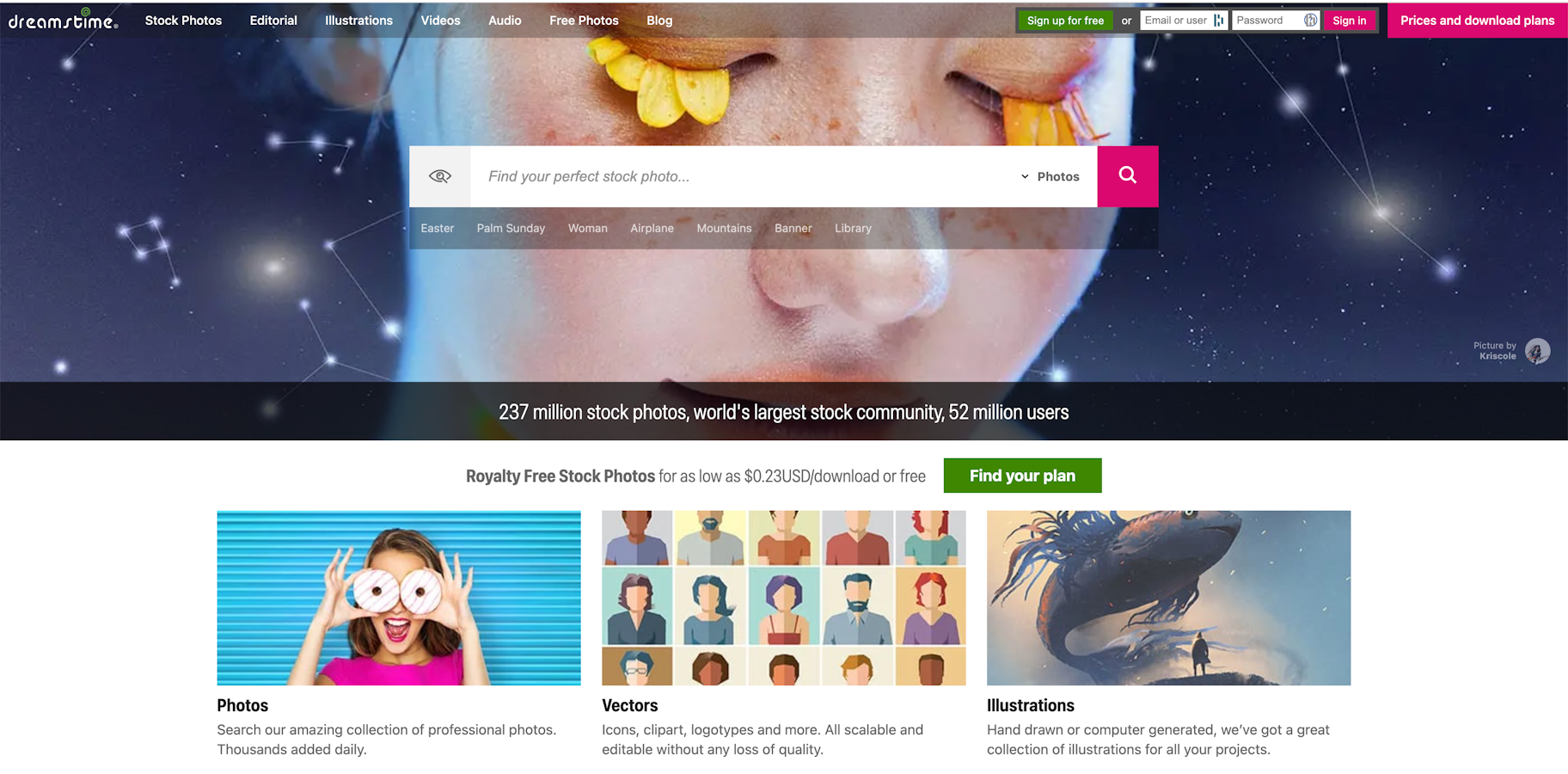Many people take great photos with their phones and cameras. But only a few realize these images can earn them money online.
This guide will show you how to make that happen. From choosing the right platforms to understanding legal basics, we’ve got you covered.
You’ll also learn how to expand your earnings through prints and photography services.



Best places to sell photos online
Licensing is a popular way to sell photos online. Stock photography sites allow you to license your images to others for commercial use and, in return, you get a share of the profits.
For those with a portfolio of high-quality images, becoming a contributor to a stock photo website can turn your collection into income. Here’s a list of stock photo websites that accept contributors from varying experience levels:
→ Click Here to Launch Your Online Business with Shopify
1. Alamy

Alamy is best known for its diverse stock photo collection, boasting more than 300 million stock vectors, images, videos, and 360-degree panoramic photos. You can upload photos directly to Alamy’s desktop site or use its Stockimo app to upload from your phone.
Alamy pays out monthly and has varying commission structures. You’ll receive between 17% and 50% of sales, depending on the popularity of your image and the type of license you choose. There’s no need to sign any long-term contract to sell photos online via Alamy.
2. Shutterstock

Shutterstock has been around since 2003 and has paid out more than $1 billion to its contributors in that time. It’s considered a micro-stock site that sells cheaper, non-exclusive images to a broad audience. The best way to earn more from Shutterstock is to contribute a large number of high-quality photos spanning different categories.
Shutterstock pays between 20% to 30% of sales over time to its contributors. There’s also an affiliate program that offers you a chance to earn more by referring new photographers or customers.
3. 500px

500px is both a marketplace and a community for photographers. On 500px, millions of photographers put their photos up for sale. With partners worldwide, the site reaches more than a million buyers looking for creative snaps.
500px also serves as a gathering place for photographers of all levels to engage with each other. Members can follow peers, list their standout images for sale, and compete in photography contests with awards. Moreover, paid members who offer exclusive photos have the opportunity to earn up to 100% in royalties.
4. Adobe Stock

Adobe Stock works well with Adobe’s photography software. This means anyone using Adobe Creative Suite can upload their images, videos, vectors, and drawings on this stock image website. You can add photos directly into the Adobe Stock library from Adobe Bridge and Adobe Lightroom, and through the web.
Due to Adobe’s wide ecosystem, listing your photos on Adobe Stock can help you reach millions of potential buyers. When a sale happens, you earn a 33% royalty from the transaction.
5. Dreamstime

Dreamstime is a photo-selling website that provides high-quality images to a diverse clientele, ranging from private sector individuals to Fortune 500 companies. It has over 50 million members and more than a million photographers adding to its collection.
Contributors on Dreamstime can earn up to 60% in royalties, but only if they choose to be exclusive to the platform. Those who are non-exclusive can still earn a decent share, between 25% and 45%, which varies based on the popularity of their images.
6. SmugMug

Whether you’re an amateur photographer or a professional, SmugMug can help you sell your photos online with a beautiful, personalized gallery that immediately attracts attention. All you need to do is upload your photos and the platform does the rest. It doesn’t really get any easier than that.
SmugMug gives you 85% of each sale, which is considerably higher than most other stock image platforms. However, it requires you to sign up for one of three monthly membership plans.
7. Picfair

Picfair is the ideal for those who want a degree of control over online image collection. The site lets you set your own prices for both prints and digital photos, plus handles payment processing. Custom store setup starts at $4 per month, billed annually. Picfair also manages print production and licenses for digital images.
8. Getty Images

Getty Images has a massive library of premium stock photos. It’s the go-to for brands and publishers who need high-quality or unique images they can’t get elsewhere. Alongside iStock, its microstock site, Getty reaches a global audience of more than 1.5 million customers.
Selling photos on Getty Images means meeting higher standards than on many other photo sites. The rewards match the effort, with rates for licensed high-quality photos beginning at 20% and potentially increasing. To become a contributor, you’ll need to apply and share a portfolio of your sample photos.
9. Depositphotos

Depositphotos helps photographers sell their work to big companies. It’s a large online marketplace for pictures and graphics, with more than 270 million items and 38 million clients across the globe. Big names like Bosch, TripAdvisor, and Subaru use it to find images.
How much you earn on Depositphotos depends on your experience, your rank on the site, the quality of your photo, and the kind of license it sells under. You can make anywhere from 25¢ to $33.82 for each photo sold.
10. Stocksy

Stocksy is the ideal place for publishers and creatives looking to make money selling photos online. It’s known for offering higher payouts compared to many other stock photography sites. Photographers can earn a 50% royalty on standard licenses and 75% on extended licenses for their photos (but they must be exclusive to Stocksy).
Stocksy runs as an artist-owned cooperative. This setup means that selling your photos there also makes you a part-owner. You’ll have input on the company’s decisions. Plus, when Stocksy does well financially, you could receive a share of the profits
How to sell photos online: 3 steps
Stock photo sites offer the simplest way to sell your photos. However, they take such a large cut of each sale that it may be worth creating your own photography site. Let’s look at how to sell your photos online through a direct and legitimate channel.
1. Choose a niche
Your niche is the consistent theme in your portfolio. If you’re drawn to the great outdoors, your niche might involve nature, travel, or landscapes. If capturing significant moments is your strength, consider specializing in weddings or graduations.
Choosing the right niche lets you pursue your passion and ensure you’re reaching the appropriate audience with your marketing. Here are some niche areas you can explore:
- People: Take portraits for authors and business leaders, or candid shots at engagement parties.
- Business: Work with companies to create branded images for their websites or product photos.
- Architecture: Capture beautiful buildings and landmarks in your region.
- Nature: Focus on landscapes, flowers, and outdoor scenes, especially if you want to sell your photos as wall art.
Not sure what to shoot? Use tools like Keywords Everywhere or Semrush to see what’s trending. This can help you identify the most in-demand topics for your photography business.
2. Build an ecommerce website
There are many ways to sell your photos online, but starting your own website is the best way to set yourself up for future growth. Having your own website means you can develop a name for yourself as a professional photographer. You’ll be able to show off your branding and logo, decide how to showcase your photos, and choose what you want to sell them for.
Ecommerce platforms like Shopify make it easy to sell photos online. Choose a suitable theme and set up a marketing funnel to generate clients for your business. Shopify also has apps that help streamline business operations, like Sky Pilot, which automatically delivers digital files to your customers after their purchase.
3. Market your photography portfolio
With your website ready to go, it’s time to shift your focus to promoting your images. Here are some strategies you can apply:
- Social media marketing. Showcasing your photography on social media can work wonders for your visibility. But you need to focus on the right channels to get the best results. Start with Behance by Adobe, where creators list their work alongside other professionals. Facebook and Instagram are also great places to promote your images. Remember to use shoppable tags so people know they’re available for purchase.
- Blogging. Blogging is a great way to share your creative process to generate interest in your images. You can tell people what went into capturing those candid moments or talk about your everyday life as a photographer. Use keywords in your blog posts to help search engines understand that you run a photography website and present it to relevant audiences.
Legal aspects of selling photos online
Understanding the legalities of selling photography online can be the toughest part of building your business. For beginners, separating things like “retail use” from “commercial use” when giving people rights to your photos can be daunting. To protect yourself from any legal mishaps, make sure you’re familiar with these terms:
- Retail use. This means permitting others to use your photography while producing a physical retail item. For instance, you might allow a company to sell a mug with one of your photos printed on it.
- Editorial use. This involves permission to use a photo in newspapers, blogs, magazines, and similar publications.
- Commercial use. Commercial permission allows customers to use your photos in marketing and advertising efforts.
- Exclusive/non-exclusive rights. Giving a customer exclusive access to a photo means they’ll be the only one allowed to use the image. Non-exclusive rights can give multiple people access to the same photos.
- Public domain. If your photo is in the public domain, it has no copyright claim and can be used for commercial, personal, and editorial purposes. Works created by government agencies usually fall into this category.
- Creative Commons. Work falling under a Creative Commons license can be used for free, provided the user complies with any established restrictions. For example, you might require all users to credit you when they publish something featuring your photo.
- Royalty free. Customers can purchase licenses to use a photo however and whenever they want. These licenses are usually non-exclusive.
- Right of publicity. If you take photos of people, they’ll have certain rights to determine how those images are used. You’ll need to get the “right of publicity” before selling these images.
- Rights managed. Customers can buy one-time licenses to use a photo, with restrictions on how they distribute the image. Further use would require additional licenses.
If you’re unsure how to license and list your photos, it may be helpful to speak to a lawyer about your copyright options.
What if someone steals your work?
It’s common for users to mistakenly assume photos published online are free to use. One of the best things you can do to protect yourself from unlicensed usage is to use a watermark generator. These tools will place watermarks on your photos, so people can’t re-use them without also displaying information about your company.
If someone uses your content even after you apply watermark protections, you can send cease-and-desist requests. Some photographers also send invoices to people who use their photos, demanding payment for their work. A combination of these methods will usually prompt a quick response.
How to sell photography prints
Selling prints directly to your fans is an easy way to make money online as a photographer. You can offer prints in different shapes and sizes, and also put your images on products like pillows and clothing.
Sites like Fotomoto, and CafePress are ideal for selling prints on paper, canvas, and other physical products, like t-shirts and calendars. You can also work with a print-on-demand service, like Printful, that integrates directly with your Shopify store.
Remember to:
- Research to find a high-quality printing service
- Get samples to ensure your products meet expectations
- Consider framing and customization options
- Set your prices and decide how long to sell certain photos
- Sign your images to highlight your brand
- Actively promote your prints online
How to sell your photography as photo books
If you have a series of photos that share a common theme or story, consider compiling them into a photo book. The more focused and thematic your collection, the greater its potential appeal to buyers. While print-on-demand services may not yield the highest profit margins, they offer a low-risk method to test the market demand for your photo books.
How to sell your photography as a service
If you prefer to make money with custom photography requests and event coverage, you can sell your services instead. Selling photography as a service usually involves requesting a per-hour price for specific tasks, like shooting wedding photography or product images.
For beginners, listing services on freelance directories like Upwork or Fiverr can be a good way to gain attention from new customers. You can also apply to be a Shopify Expert, which means you’ll sell your photography to companies looking for images for their Shopify websites.
Remember, you’ll need to constantly build your image as a leading photographer and attract new clients. Make sure you:
- Have an attractive LinkedIn profile. People will often visit your LinkedIn page to learn more about your services after seeing your portfolio or other social profiles.
- Attend networking events. Connect with people in person as often as possible so you can make new relationships and find potential clients. Remember to give out your business card so people can find your details later.
- Build your brand. Develop an image as a thought leader by sharing content online, like blogs, videos, and guides. The more you build an expert image, the more customers trust you when looking for a reputable photographer.
It’s also worth having a booking platform available so you can keep track of when your customers need your services and organize your schedule accordingly. Platforms like Shopify have integrations to add bookings to your site.
Going from capturing to selling
By now, you probably see the earning potential in selling photos online. Whether photography is your full-time hustle, your side gig, or your hobby, there are more ways than ever before to turn your passion into profit. So, would your first sale come from a stock photography site, or is selling photos directly the better option for you? We’ll let you decide.
How to sell photos online FAQ
What is the best way to sell your photography?
The best way to sell photos online is by listing them as stock images for sale on your own website. Ecommerce platforms like Shopify let you sell photographs as digital downloads and avoid the commissions charged by third-party websites. You can also create offers by putting images together in a collection or bundle based on a theme. Nothing matches the level of flexibility and control provided by your own site.
Where can I sell photographs for money?
- Alamy
- Shutterstock
- 500px
- Adobe Stock
- Dreamstime
- SmugMug
- Picfair
- Getty Images
- Depositphoto
- Stocksy
How do you make money from stock photography?
Stock photography websites, or stock agencies, sell the images you upload at a high price. Agencies license individual images to clients and charge a set amount. Then you, the photographer, get a predetermined share from the amount, called a royalty payment.
How much can you make selling stock photos?
On average, you’ll earn 25¢ to 45¢ per image when selling on stock photography platforms. If you regularly upload high-quality images for popular themes, you can easily start making $300 to $500 per month or more. Remember that factors like image quality and the number of agencies you submit to can affect your monthly earnings.



Want to learn more?
- How to Start a Photography Business: 6 Helpful Tips
- How to Take Amazing Product Photos With a Smartphone
- 24 Best Photo Editing Apps for iPhone and Android
- 18 DIY Product Photography Tips to Boost Sales
